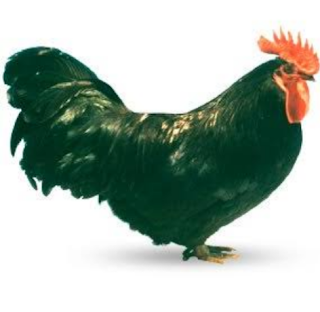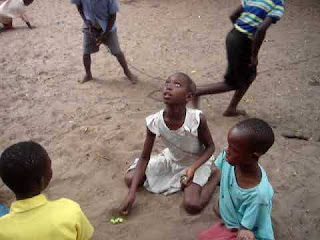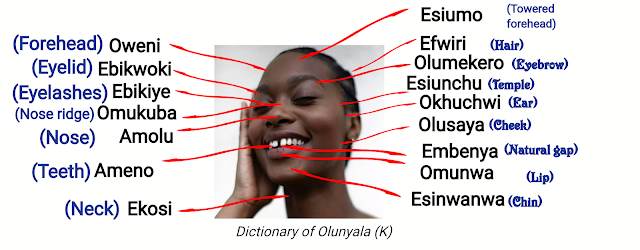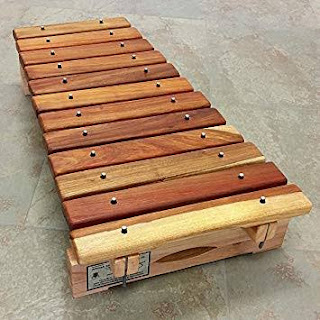ABANYALA BA KAKAMEGA- The Cultural Role of Chicken- Engokho
"An ENGO is never complete without an ENGO-KHO," that is what the Abanyala ba Kakamega say to emphasise the importance of chicken in a home. Just like other subtribes of the Luhya, engokho is the word used to refer to chicken among Abanyala ba Kakamega.
The Abanyala and other Abaluhya tribes share a lot about chicken. Why? They are of one cultural sion. It is narrated that the eighteen subtribes of Luhya had a common cultural ancestry where the indigenous chicken was at the centre of many cultural activities.
This documentation is about engokho- the indigenous chicken. Among the Abanyala ba Kakamega, the word has both sigular and plural connotation.
Females and chicken eating.
Traditionally, taboos had it that a chicken was a preserve for men. Though it can be claimed that it was due to the greedy nature of men and fear that women would end up prefering to eat chicken products daily, there were deeper cultural reasons as it will be seen in this documentation. Indeed, Abanyala slaughtered a chicken only if the chicken was sick or if there was a cultural reason
The first documented woman to eat a chicken among the Abanyala ba Kakamega was Nakhuba of the Abamulembo clan who had got married to the Abatabani clan. To date, women from the Abatabani clan are known as Nakhuba in honour of this heroine.
It is said that after the death of her husband, Nakhuba visited her daughter's marital home and chicken was prepared for the would be male visitors. However, at the time of her meal, she physcally cried and demanded for chicken which she finally ate. She claimed she was representing her dead husband. That she had eaten chicken in secret before and nothing had happened to her. From this time, women started the progressive move toward taking chicken although with reservations on some parts. Before that, women could only prepare the chicken meal for their husbands and leave tasting or any other eating ceremony to him.
Housing and handling of chicken
Chickens were domesticated using the free range system. There were no special houses constructed for chicken since they shared a designated part of the kitchen (efumbiro) space. Since there were no pit latrines then, it was common to hear Abanyala giving a saying, "You cannot eat a chicken if you go by what it eats.' The chicken were free to roam and eat anything worth eating under the sun. That is why a chicken to be slaughtered was not left to go out in the morning- it was put under a special busket called omuinda.
Chickens laying eggs were put on a special nest called ekacha made from old baskets called esitendekere. Soft shelled egg was called ewuyu ewoyawoye and it was not eaten. At times, chickens were restricted to move by being put under a big chicken basket called ewuli. A banana fibres called ekhola was used to tie the legs of a chicken during long distance carrying. Chickens were carried under the armpit facing backward.
Sounds made by chicken
Chickens were named basing on age, sex, structure and colour. These names include:
Apart from being a source of food, chicken had the following major uses.
Slaughtering of the chicken happens at designated places based on the function.
Slaughtering of chicken for general feasting takes place at the back end of the kichen (esifumbiro). Commonly done by a man though a woman could also slaughter in absence of male member. Some family men were tought the skills of looking at the entrail of the chicken to discern some information about the future events in the family. That is why most activities about chicken were men affairs.
The feathers around the neck are unplucked and the throat is cut with a sharp knife. Removing the head completely at this stage was discouraged. The chicken was never tied at slaughter time and one has to wait till it has stopped kicking and blood is spilt out completely. This was to ensure that it does not have an effect on the taste of the chicken. A chicken that took off to the visitors table when preparing for slaughter received salivation from the knife and was given alive to the visitor- another one was slaughtered.
Preparing chicken before cooking for normal family meal.
The chicken is put on a traditional tray called oluteru (that is not smeared) and cut into pieces using a knife called ekhande (kitchen knife) or olukhoni (curved kitchen knife). First, the head is removed and the legs cut off cut off at the knee. The chicken is placed facing upside down and cut from chest down.
The crop (esakhiro) is then carefully removed. Other internal organs are removed with a lot of care to avoid puncturing the bitter spleen (enduse). The intestines are given to young boys who clean them by a process called okhuniokosa, wind them around a stick of esiriecho and then roast on fire to eat.
Cutting of the chicken into pieces is called okhwachula eliani. The cutting can be done either by a man or a woman. The following are the eleven major pieces present a chicken prepared by an expert lady: the head, the kneck, the two wings, the two legs, the two drum sticks, the pope's nose, the back and the gizzard
Preparing whole chicken for son in-laws, kings and special persons.
The chicken is put in a serving bowl ‘esibange’ and brought to the table. It is a complementary meal to ugali. The father would serves other men while the mother served her children. The specific parts of the chicken were designated for specific people.
The Abanyala and other Abaluhya tribes share a lot about chicken. Why? They are of one cultural sion. It is narrated that the eighteen subtribes of Luhya had a common cultural ancestry where the indigenous chicken was at the centre of many cultural activities.
This documentation is about engokho- the indigenous chicken. Among the Abanyala ba Kakamega, the word has both sigular and plural connotation.
Females and chicken eating.
Traditionally, taboos had it that a chicken was a preserve for men. Though it can be claimed that it was due to the greedy nature of men and fear that women would end up prefering to eat chicken products daily, there were deeper cultural reasons as it will be seen in this documentation. Indeed, Abanyala slaughtered a chicken only if the chicken was sick or if there was a cultural reason
The first documented woman to eat a chicken among the Abanyala ba Kakamega was Nakhuba of the Abamulembo clan who had got married to the Abatabani clan. To date, women from the Abatabani clan are known as Nakhuba in honour of this heroine.
It is said that after the death of her husband, Nakhuba visited her daughter's marital home and chicken was prepared for the would be male visitors. However, at the time of her meal, she physcally cried and demanded for chicken which she finally ate. She claimed she was representing her dead husband. That she had eaten chicken in secret before and nothing had happened to her. From this time, women started the progressive move toward taking chicken although with reservations on some parts. Before that, women could only prepare the chicken meal for their husbands and leave tasting or any other eating ceremony to him.
Housing and handling of chicken
Chickens were domesticated using the free range system. There were no special houses constructed for chicken since they shared a designated part of the kitchen (efumbiro) space. Since there were no pit latrines then, it was common to hear Abanyala giving a saying, "You cannot eat a chicken if you go by what it eats.' The chicken were free to roam and eat anything worth eating under the sun. That is why a chicken to be slaughtered was not left to go out in the morning- it was put under a special busket called omuinda.
Chickens laying eggs were put on a special nest called ekacha made from old baskets called esitendekere. Soft shelled egg was called ewuyu ewoyawoye and it was not eaten. At times, chickens were restricted to move by being put under a big chicken basket called ewuli. A banana fibres called ekhola was used to tie the legs of a chicken during long distance carrying. Chickens were carried under the armpit facing backward.
Sounds made by chicken
- Okhukweekweera- made as a sign of visible enemy and it runs away or as it struggles to free.
- Okhutechera- made by a female chicken in readiness or mating or after laying and egg.
- Okhukekera- sound made by chicken calling another for meal.
- Okhuwukukha- made by a cock after sighting an enemy as away of alerting others
- Okhukhokora- made as warning sign of possible enemy being chased. For example, a chicken runing around with live small fish will produce this sound.
- Okhuchwiera- sound made by chick especially when lost.
- Okhulakula- crowing that is time dictated
- Okhukholiokha- crowing done to mark territory during the day.
Chickens were named basing on age, sex, structure and colour. These names include:
- Etwaywa- A mature cock.
- Esubeni- A young cock. Good in cultural rites..
- Esitakho- a hen ready to lay eggs but has never laid before.
- Omusenye- one which has laid eggs before
- Esimiinywi- a chick
- Namasasaba- chicken with feathers covering the legs.
- Engokhakokhe- grey feathered chicken.
- Enyange- white feathered chicken.
- Enjaayi- red feathered chicken.
- Embukulu- black with many white spots

Embukulu - Nalukosi- chikcken with no feathers round the kneck.
- Kingetayi- a type of nalukosi with tuft of feathers around featherless neck. Commonly called nalukosi.
- Namakutusi- chicken with tufts of feathers on its head making it look as if it had a hat called ekutusi.
- Nakibende- with short legs and st times short tail feathers

Nakibende - Namasimbie- black with white spots in a row on the body.
- Wafurukha- with rough feathers. It is said it can be made to prevent bad spirits in the home. Due to thist, it is not commonly slaughered for a visitor or given to be used for a family traditional function unless the function requires it.

Wafurukha - Nalukendo- chicken with few feathers on part of its body.
- Anjika- chicken without feathers. Abanyala never reared a chicken without feathers. It was thrown away from home for it spelled bad omen.
Apart from being a source of food, chicken had the following major uses.
- Time keeping role- the cock crows at specific times hence helping to calibrate time at night. There is the first cock crow, the second cock crow and third cock crow before morning. It was because of this that chicken where said to have foretelling spirit from Were Khakaba and held in high esteem. The crowing before morning is called okhulakula. The normal day crowing was called okhukholiokha.
- Chicken for wading off evil spirits in the home- the rough feather chicken called wafurukha is believed to be able to be made to wad off evil spirits and evil feelings if domesticated following specific procedures.
- Checken as personal totem item- at times specific chicken can be dedicaed to benevolent spirits lest they For example, there are times two ancestral names manifested during naming. Such a child was given both names. The was the main name and the helper called omulesi. This required domestication of chicken in early life stages.
- Naming ceremonies- in case of conflict in child's name choice, two chicken were named and thrown up the house. The name given to the one that landed on ground first was picked.
- Chicken was slaughtered on special occassions of visits and family celebrations.
- Source of cooking fat called amasalulule. The chicken skin had a lot of animal fat that could be stored for future use. Cooking by frying using animal fat was called okhusalulusa.
- Chicken used by spy during migration- to test if the new land was going to be good, a chicken was taken to the new land in the evening and left there. If it was still alive in the morning, then the land was declared habitable.
- The feathers, scales, beak and entrails of some specific types of chicken could be a source of herbal medicine.
- Chickens were used in creating peace truce in any fight that lead to blood shed called okhumala esibanga.
- They were good at predicting future. For example, men could know impending inversion by enemies through interpretation of chicken sounds; chicken entrails could be observed and their colour or shape or air bubbles could predict future; a chick given as gift to a child could help to predict its future success or failure, the shape of cooked parts such as clenched toes or closed beaks could help predict hidden information.
- Chicken was a form of payment or appreciation after a good deed. For example, the circumcisor and midwife ware paid chicken.
- Chicken formed part of many traditional ceremonies such that we had many references.
- Engokho ya omukulukho- given to the grave diggers.
- Engokho ya amakokha- given to woman who picks a thrown child.
- Engokho ya ekokhe- eaten upon official inheritance
- Engokho ya etiko- given to the thatcher upon completing the thatching.
- Engokho ya esiiro- given to the person who splits the main beam of an old house in a ceremony of okhukwisa ekubiri.
- Engokho ya omukasa- given to one who hands over the spear to a king or who gives a bracelet.
- Engokho ya omuomwolo- chicken given to birth attendant
- Engokho ya okhwacha endalo- eaten at start of first soil breaking.
- Engokho ya etiang'i- eaten by circumcision candidate very early before circucision. It had no salt in it.
- Engokho ya okhwacha erumbi- eaten when the initiated boy graduates after circumcision.
- Engokho ya esikimbiro- given incase you are rained on by accident at fall of first rain after a long dry spell.
- Engokho ya olume- given to a person who has given you herbs especially those that required a cut.
- Engokho ya amakata- roasted by the person who has helped to make a decision in a given serious case.
- Engokho ya olukumba. Used by circumcision man to bless the inciated boy.
- Engokho ya olubito- given to a person who has blessed another.
- Engokho ya esibanga- slaughtered and used to reconcile by sprinkling the blood.
- Engokho ya esiswaliro- slaughtered for men participating in making mud for house mudding.
- Engokho ya ebasa- chicken that is killed in lieu of the twins during the twin dance.
- Engokho ya esiruukhi- give to a person who attempted to seduce or marry a relative.
Slaughtering of the chicken happens at designated places based on the function.
Slaughtering of chicken for general feasting takes place at the back end of the kichen (esifumbiro). Commonly done by a man though a woman could also slaughter in absence of male member. Some family men were tought the skills of looking at the entrail of the chicken to discern some information about the future events in the family. That is why most activities about chicken were men affairs.
The feathers around the neck are unplucked and the throat is cut with a sharp knife. Removing the head completely at this stage was discouraged. The chicken was never tied at slaughter time and one has to wait till it has stopped kicking and blood is spilt out completely. This was to ensure that it does not have an effect on the taste of the chicken. A chicken that took off to the visitors table when preparing for slaughter received salivation from the knife and was given alive to the visitor- another one was slaughtered.
Preparing chicken before cooking for normal family meal.
- Water is heated to boiling point then the dead slaughtered chicken is immersed in it to loosen the feathers plucking.
- The feathers are removed by plucking them from the main skin in a process called okhumanyula. The outer hard part of claws and beak are pulled out in a process called okhufuwula. The scales on the legs and crown are scraped off. All these are thrown and not burried. From this stage, the chicken is refered to as eliani and not engokho.
- The chicken is then placed on an a wire called esiango and roasted as it is turned on an open fire in a process called okhumama engokho. This is indeed the secrete behind any best prepared chicken. Ladies brought up in towns without this informal education have no idea about the role of this stage for they cook town-tasting chicken in villages when they visit. This stage is key to good tasting chicken for it helps to: burn any remaining feathers or chicken-hairs off the skin of the chicken, it dries up dripping blood to remove the red colour of blood, it gives the chicken the rural flavour associated with village chicken and it makes the chicken golden brown.
The chicken is put on a traditional tray called oluteru (that is not smeared) and cut into pieces using a knife called ekhande (kitchen knife) or olukhoni (curved kitchen knife). First, the head is removed and the legs cut off cut off at the knee. The chicken is placed facing upside down and cut from chest down.
The crop (esakhiro) is then carefully removed. Other internal organs are removed with a lot of care to avoid puncturing the bitter spleen (enduse). The intestines are given to young boys who clean them by a process called okhuniokosa, wind them around a stick of esiriecho and then roast on fire to eat.
Cutting of the chicken into pieces is called okhwachula eliani. The cutting can be done either by a man or a woman. The following are the eleven major pieces present a chicken prepared by an expert lady: the head, the kneck, the two wings, the two legs, the two drum sticks, the pope's nose, the back and the gizzard
Preparing whole chicken for son in-laws, kings and special persons.
- The chicken prapared this way is called esiango. It is a sign of honour and esteem.
- The whole chicken is cleaned well and boiled in salted water (omunyu mufume) until well cooked. Omunyu mufume helps to make it tender. It is then roasted on hot charcoal and fried in its own fat shortly then removed. After that, onions and tomatoes are fried in chicken fat separately and salted to taste. The onion-tomato mixture is used as the chicken-filling stuffed in the space where the inner contents were removed.
The chicken is put in a serving bowl ‘esibange’ and brought to the table. It is a complementary meal to ugali. The father would serves other men while the mother served her children. The specific parts of the chicken were designated for specific people.
- The head (omuchwe)- this is not served to visitors. Eaten by children.
- The kneck (ekosi)- this is also not served to visitors. Eaten by the children.
- Two legs- the leg with toes intact is cooked but not served to visitors. Eaten by children. They have to be cooked for they act as evidance that the visitors have been served a chicken and not any other wild bird.
- The gizzard (emondo)- the sandy inner content are removed by knocking and the inner layer peeled off. This must be served to man of the house- while it is not facing down on the plate. In serving a mature male visitor, it is put on his plate but he should not eat it. It goes back to the owner of the home. However, if the visitor is of senior relation to the owner of the home such as father, uncle or grandfather; then the imondo may be eaten by him. Also, if the preson has presided over a function in the home, then he may eat it. When serving in-laws, it is put on the plate of the elderly among the visitors who does not eat it. In fact, in-law cannot eat chicken unless they have paid dowry. A gizzard is never shared.
- Two drumsticks (enjulunjumbu) are given to any elderly men in the home.
- Pope's nose (ekasundi) was for owner of the house (husband) or elderly people.
- The two wings (ebipapaliro are served to children.
- Any other internal organs such as lungs, liver and eggs that were in the body are served to the children.
- That when serving boys, the very end tip of the wing is cut and removed because boys are not supposed to eat it. It is believed girls will not accept them if they eat it.
- That the boys are not to eat chicken's heart for it may make them cowardly.
- That if there is a sick person in the home and the chicken collects into a flock- including those from the neighbours- then noisly rushing into the compound, a calamity is brewing. You have to give them some grains to silence them.
- Never bury a chicken. It was believed that herbs can be given to your chicken which becomes potent upon you burying it. You complete the bewitching by yourself.
- That if you wake up and find a chicken sleeping the middle of three cooking stones, then there is a looming third partner in your marriage.
- That never never mix chickenchicken with any other meat type during cooking for it is a way of sending away wealth from home.
- That bones of the chicken meal used when welcoming parents to start eating in your house (okhwingisa abeuli) should never be eaten by a dog or any other animal. If it is eaten, it leads to bad blood between the daughter-in-law and the family. She may turn out to views them as mere dogs too.
- A pregnant woman was not supposed to break a chicken to remove the entrails.
- That never serve the whole chicken while it is facing down on a serving plate to visitors.
- That a female chicken that crows like a cock has to be slauhtered for it is a premonition of calamity.
- Milk and chicken were not mixed by one person during a single meal session.
- That pregnant women were not allowed to eat eggs because they would have problems during child birth.
- That separating fighting chicken before one of them takes off was said to be blocking visitors.
- That chicken cooked when starting life in new house must be shared with brothers or neighbour.
- That a new chicken made to jump a broom at the door will never get lost. This is same to a lady who is being wooed and jumps over a broom at the door- she develops instant bonding.
- A woman who comes from their home with a chicken after a short separation was never beaten or abused. If she let the chicken to go, it spelled doom for the husband.











Comments
Post a Comment